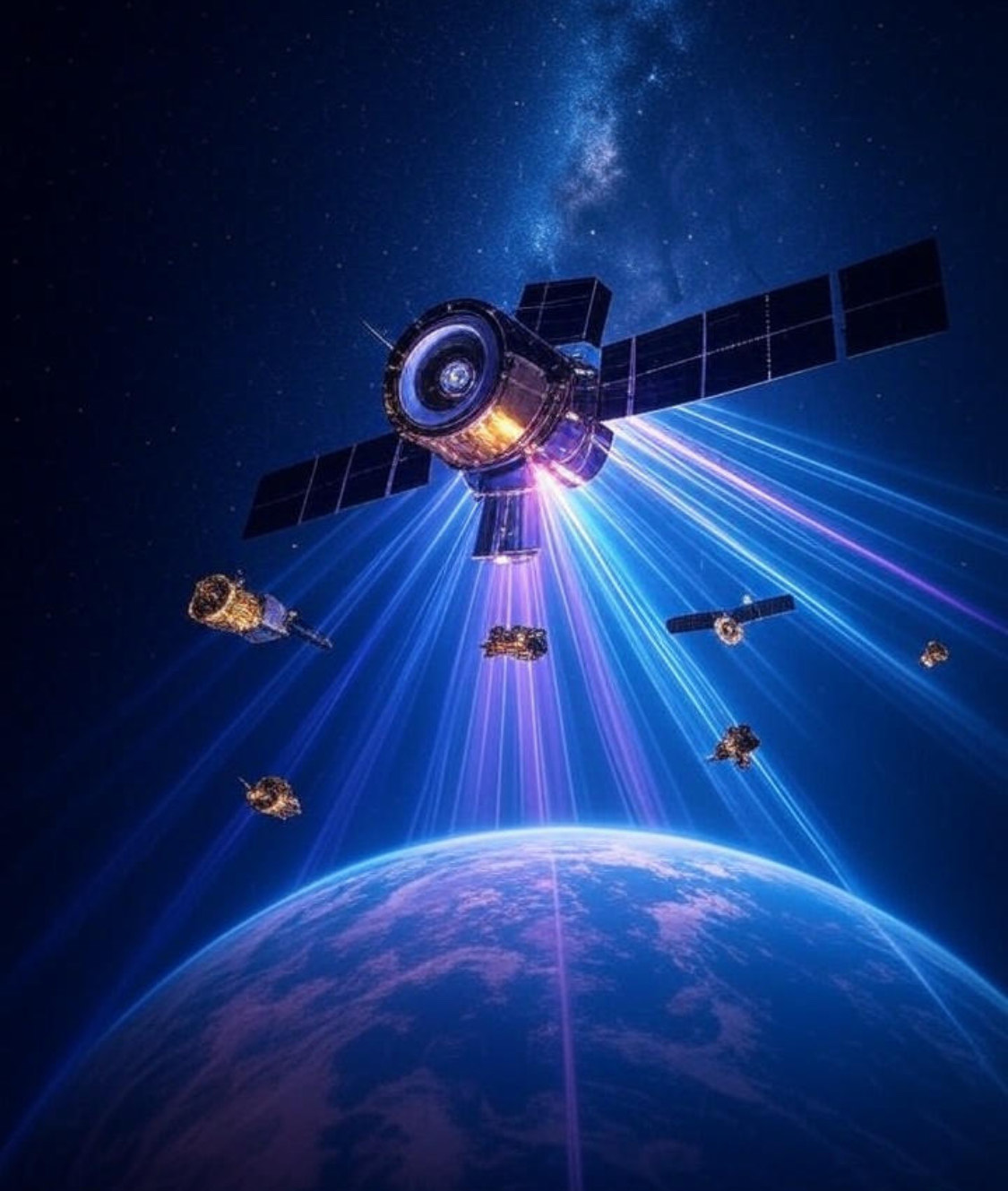LASER-BASED DATA SYSTEMS FOR NEXT-GEN SATELLITE TECHNOLOGIES
- THOTH Aero

- Sep 24
- 4 min read
Updated: Oct 29
In the ever-evolving world of satellite technology, innovation is key. As we look to the future, laser-based data systems are emerging as a game-changer. These systems promise to enhance communication, improve data transmission, and revolutionize how we interact with satellites.
This blog post will explore the significance of laser-based data systems in next-gen satellite technologies. We will discuss their advantages, applications, and the future they hold for the industry.
UNDERSTANDING LASER-BASED DATA SYSTEMS
Laser-based data systems utilize light to transmit information. Unlike traditional radio frequency systems, which rely on electromagnetic waves, laser systems use lasers to send data. This method offers several advantages, including higher bandwidth and improved security.
Laser communication systems can transmit data at much higher rates than conventional systems. This is crucial for satellites that need to send large amounts of data back to Earth.
Moreover, laser systems are less susceptible to interference. This means that they can provide more reliable communication, especially in crowded frequency environments.
ADVANTAGES OF LASER COMMUNICATION
HIGH DATA RATES
One of the most significant benefits of laser-based data systems is their ability to achieve high data rates. For instance, laser communication can reach speeds of several gigabits per second. This is essential for applications like Earth observation, where large datasets need to be transmitted quickly.
ENHANCED SECURITY
Laser communication systems offer improved security compared to traditional methods. The focused nature of laser beams makes it difficult for unauthorized users to intercept the data. This is particularly important for military and government satellites that handle sensitive information.
REDUCED SIZE AND WEIGHT
Laser systems can be more compact and lightweight than traditional radio systems. This is a crucial factor for satellite design, as every gram counts when launching into space. Smaller systems can lead to more efficient satellite designs and lower launch costs.
APPLICATIONS OF LASER-BASED DATA SYSTEMS
EARTH OBSERVATION SATELLITES
Earth observation satellites are one of the primary beneficiaries of laser-based data systems. These satellites collect vast amounts of data about the Earth's surface, atmosphere, and oceans. With laser communication, they can transmit this data back to Earth more efficiently.
For example, the European Space Agency's (ESA) Earth observation satellites use laser communication to send high-resolution images and data. This allows for real-time monitoring of environmental changes, natural disasters, and climate patterns.
COMMUNICATION SATELLITES
Communication satellites are another area where laser-based systems shine. These satellites provide internet and communication services to remote areas. By using laser communication, they can offer faster and more reliable services.
Companies like SpaceX are exploring laser communication for their Starlink satellite constellation. This could significantly enhance internet speeds for users in rural and underserved regions.
SCIENTIFIC RESEARCH
Laser-based data systems are also vital for scientific research. Satellites that study space phenomena, such as black holes or cosmic radiation, require high data rates to transmit their findings. Laser communication enables these satellites to send large volumes of data back to Earth for analysis.
CHALLENGES AND CONSIDERATIONS
While laser-based data systems offer many advantages, they also come with challenges.
WEATHER SENSITIVITY
One of the main challenges is weather sensitivity. Laser communication can be affected by rain, fog, and other atmospheric conditions. This can lead to interruptions in data transmission.
LINE OF SIGHT
Laser communication requires a clear line of sight between the transmitter and receiver. This can be a limitation in certain scenarios, such as when satellites are in low Earth orbit and need to communicate with ground stations.
COST
Implementing laser-based systems can be more expensive than traditional methods. The technology is still developing, and costs may decrease as it becomes more widespread.
THE FUTURE OF LASER-BASED DATA SYSTEMS
The future of laser-based data systems in satellite technology looks promising. As technology advances, we can expect to see more satellites equipped with laser communication systems.
INCREASED ADOPTION
More companies and organizations are likely to adopt laser communication for their satellite systems. This could lead to a significant increase in data transmission capabilities and improved services for users.
TECHNOLOGICAL ADVANCEMENTS
Ongoing research and development will continue to enhance laser communication technology. Innovations in optics, materials, and data processing will improve the efficiency and reliability of these systems.
INTEGRATION WITH OTHER TECHNOLOGIES
Laser-based data systems may also be integrated with other technologies, such as artificial intelligence and machine learning. This could lead to smarter satellites that can analyze data in real-time and make decisions based on their findings.
REAL-WORLD EXAMPLES
Several organizations are already implementing laser-based data systems in their satellite technologies.
NASA'S LASER COMMUNICATIONS RELAY DEMONSTRATION (LCRD)
NASA is at the forefront of laser communication technology with its Laser Communications Relay Demonstration (LCRD). This mission aims to test and validate laser communication systems in space. The LCRD will demonstrate how laser communication can improve data transmission for future missions.
ESA'S EUROPEAN DATA RELAY SYSTEM (EDRS)
The European Space Agency has developed the European Data Relay System (EDRS), which uses laser communication to relay data from low Earth orbit satellites to ground stations. This system significantly enhances data transmission speeds and reduces latency.
CONCLUSION: A BRIGHT FUTURE AHEAD
Laser-based data systems are set to transform the landscape of satellite technology. With their high data rates, enhanced security, and compact design, they offer numerous advantages over traditional communication methods.
As we move forward, the adoption of these systems will likely increase, paving the way for more efficient and reliable satellite communication. The future is bright for laser-based data systems, and we can expect to see exciting developments in the years to come.

Comments